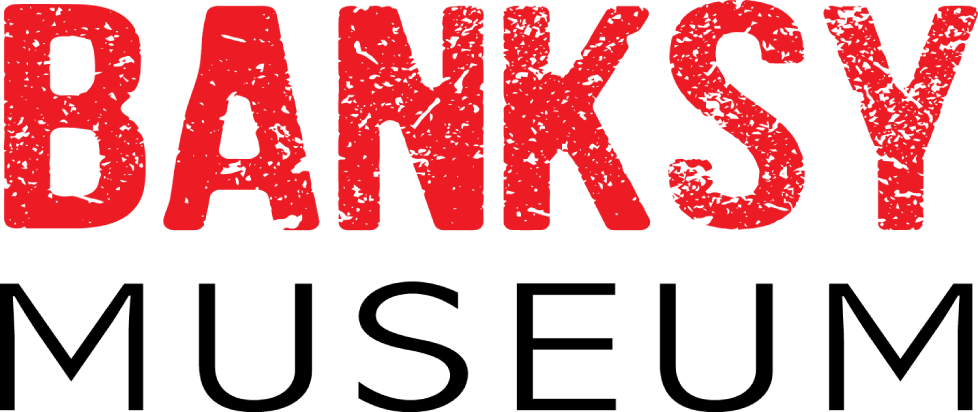
Banksy on Display: An Interview with the Executive Director with NYC’s New Banksy Museum
Banksy is more than the name of a mysterious street artist. His work spans all mediums, defying the limits of what’s possible with artistic endeavors. Whether it’s a painting that half-shreds itself, graffiting his own toilet to advocate for self-isolation during the height of the COVID-19 outbreak, or charity work, the pseudonymous renaissance man can only be known through his prolific art. So to properly introduce him we have the hard work of the Banksy Museum in NYC, which has put together the world’s largest collection of Banksy’s murals and artworks, weighing in at over 160 pieces from London, Bristol, Paris, Venice, Bethlehem, New York, LA, and more. Not only is the museum open to local visitors, they’ve put in the effort to schedule remote tours as well. To get all the details, we sat down with William Meade, the Executive Director of the museum.
A New York state native from Rochester, early on Meade moved to NYC, calling Rochester’s weather so terrible that NYC “was a tropical paradise when I was 16,” as he recalls. Meade got his start in live music after attending Eastman School of Music, the Manhattan School of Music, and the Juilliard School. He then “started touring with large rock and roll acts as well as Broadway tours,” as he recalls, adding, “So, not your typical path to be a museum’s Executive Director.”

In the intervening twenty years, Meade went on to produce “television, Broadway, concerts, recordings, touring productions and large scale events around the world. I’ve been honored to work with renowned artists [like] Johnny Cash, Bob Dylan, Aretha Franklin, Twyla Tharp, Mikhail Baryshnikov, Rudolf Nureyev, Carol Channing and Stevie Wonder.” And also “social and political leaders – Henry Kissinger, George Bush Sr, Jimmy Carter, Roh Moo-hyun and Susilo Bambang. I have produced more than 20 international performing arts tours that have performed in over 24 countries around the world including South America, Asia, Europe and North America.”
For Meade, his appreciation of Banksy began in the 2010s. “I’d been aware of Banksy’s work since the late 1990’s, but I came to more readily recognize his work during his residency in New York in 2013. I became fascinated by the mystery surrounding his identity and was drawn to uncover the meaning behind his creations. I was also drawn to his social and political commentary, the street art culture, his accessibility in public places, the simple but complex visual appeal and just simply that no one else was doing what he was doing.” When I asked Meade for what stuck with him most, he broke it down to five pillars that make Banksy’s art so distinct:
“Conceptual Depth: Banksy’s art often carries thought-provoking messages or social commentary, addressing issues like politics, capitalism, consumerism, and war. This conceptual depth adds layers of meaning to his pieces beyond mere visual aesthetics.”
“Subversive Approach: Banksy’s art frequently challenges societal norms and institutions, using irony, satire, and subversion to provoke viewers into questioning the status quo.”
“Global Recognition: Banksy’s anonymity and the widespread dissemination of his work through social media and documentaries have contributed to his global fame. His art has transcended traditional street art circles to become widely recognized and celebrated around the world.”
“Clever Execution: Banksy’s pieces often feature clever visual puns, juxtapositions, or unexpected elements that catch the viewer’s attention and invite further exploration.”
“Guerrilla Tactics: Banksy’s use of guerrilla tactics, such as unauthorized installations in public spaces or surprise exhibitions, adds an element of risk and adventure to his art, further enhancing its appeal.”

It was during a trip in Paris that Meade would cross paths with the museum work of the Banksy Museum’s future founder, Haziz Vadar. Meade, having worked on a number of traveling exhibitions for National Geographic, The Natural History Museum, and Ministry of Culture in China, was precisely who Haziz had in mind to help bring the Banksy Museum into reality. “Haziz’s dream was to have the largest collection of Bansky art in the world. Through his connections with street artists in England and throughout Europe, they assembled a group that came to New York and worked for months. And, to this day we don’t know any of their identities.”
When asked about the museum layout itself, Meade says, “I believe that you will experience the depth of Banksy’s art in a whole new way. Our goal was to display his art as close to the original environment as was originally intended. Now, clearly many of his pieces were created in war zones so even the buildings that he created them on don’t exist. I have spoken to many people that were affected so deeply that they came out of the exhibition in tears.”
As a former record producer, Meade did lament that they couldn’t include Banksy’s musical works, while admitting, “In my past life I was a record producer and so I was always intrigued by his artwork on CD covers. We have so much work packed in our space I don’t know where we could put anything else and do it justice.” Given that there’s over 160 works by the mysterious modern renaissance man, that’s a fair compromise – and it wouldn’t be Banksy if things didn’t come together a bit unconventionally.
Asked about which piece speaks to him the most, Meade points to “Slave Labour”. “This artwork appeared on a wall in London in 2012 and depicted a young boy hunched over a sewing machine, making Union Jack bunting. The piece was intended to draw attention to the exploitation of child labor, particularly in the context of the Queen’s Diamond Jubilee celebrations.”
He recalls the history of it as well, explaining, “However, controversy erupted when the artwork was removed from its original location and put up for auction in Miami without Banksy’s consent. Many criticized the removal of the piece from its public setting, arguing that it was a form of cultural theft and exploitation. The auction house defended its actions, stating that the artwork had been legally acquired. The incident sparked widespread debate about the commodification of street art, the ethics of removing public artworks from their original locations, and the role of auction houses in the art world. It also raised questions about the value of Banksy’s work and the broader issue of art’s relationship to commerce and capitalism.” A picture can speak a thousand words, but few have as storied a journey as those in this collection.
In order to ensure everyone can be included, the museum has worked to offer remote tour groups. As of the time of our interview, Meade was set to give a tour for a high school art class thousands of miles away in Uruguay. With fully re-imagined spaces to capture the street art experience, and working with anonymous street artists to help nail the aesthetic, the Banksy Museum offers an exhibit like no other.
The Banksy Museum is now open for attendance in New York City, New York.
———
With over ten of writing years in the industry, Elijah’s your guy for all things strange, obscure, and spooky in gaming. When not writing articles here or elsewhere, he’s tinkering away at indie games and fiction of his own.


